
Are Bunions Limiting Your Activities and Lifestyle?
Bunions can be very painful. With each step, your entire body weight rests on that bunion. Ouch! A common misconception about a bunion is that it is an overgrowth of bone that can simply be "shaved off". In reality, bunions are complex deformities caused by an unstable joint.
Lapiplasty® 3D Bunion Correction
Relief is here. Now, there's a new, patented treatment for bunion correction – Lapiplasty® 3D Bunion Correction. Dr. Levin and Dr. Barrett at New Tampa Foot & Ankle are offering this exciting, new treatment option which does more than simply remove "the bump"; it addresses your bunion in three dimensions to correct the root of the problem. Advanced fixation technology is used to secure the correction in place, allowing patients to walk within days of surgery.1
See why Lapiplasty® 3D Bunion CorrectionTM
differs from traditional 2D surgery
Why Was Lapiplasty® 3D Bunion Correction Developed?
For 87% of people with bunions, traditional surgery has failed to get to the true source of the problem – a 3-dimensional deformity caused by an unstable joint.2 This is why many people who have had traditional surgery have had their bunions return.3 In fact, 1 in 3 patients have been left dissatisfied with their surgical outcome in the past and up to 70% of those treated have had their bunion return.4
Traditional Approaches To Bunion Correction Have Been Ineffective

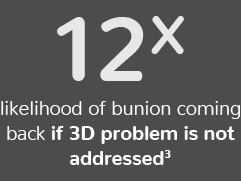


Traditional Surgery Is A 2D Solution For A 3D Problem
Traditional bunion surgery has been limited to an incomplete, two-dimensional (2D) approach to correction; cutting the bone in half and pushing the top part over to reduce the appearance of the bump. This 2D "cut and shift" approach primarily addresses the bunion's symptoms, not the root cause – the unstable foundational joint – leaving the bunion significantly more likely to come back to some degree.3
Traditional 2D Surgery
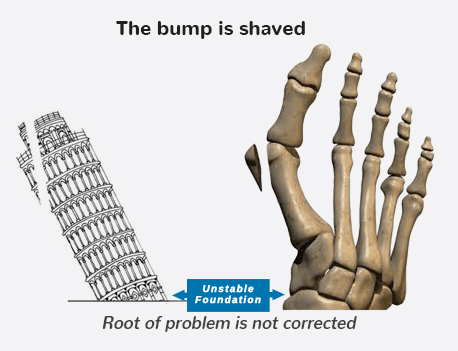
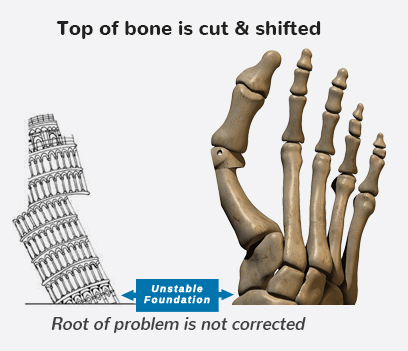
How Does Lapiplasty® 3D Bunion Correction™ Work?
Instead of cutting the bone in half and shifting the top part over, the patented Lapiplasty® Procedure uses specially-designed instrumentation to rotate the entire deviated bone back into its normal anatomical position, naturally straightening your toe; removing the "bump" and associated pain. Innovative titanium plating technology5,6 permanently secures the unstable foundation, the root of your bunion problem. Most patients are able to walk within days of surgery.1 No cast is required; allowing patients to get back to the shoe wear of their choice and activities quickly.1
Lapiplasty® 3D Bunion Correction™
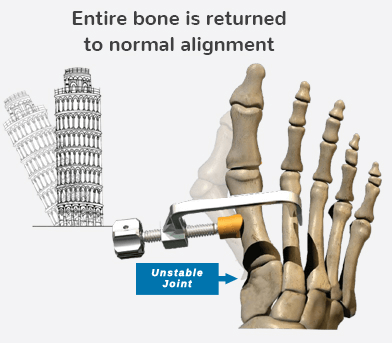
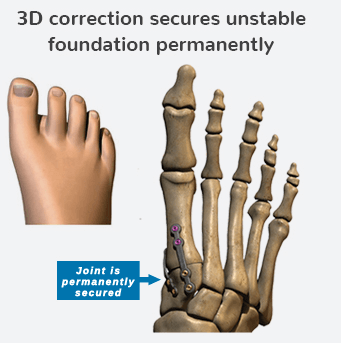
What Does A Correction Look Like On X-Ray?
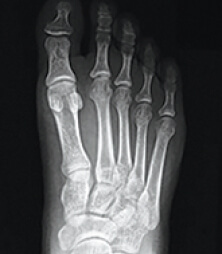
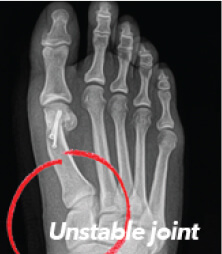
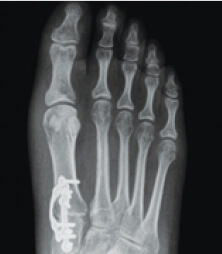
Lapiplasty® Patented Titanium Plating Technology — Enabling Early Weight Bearing
The Lapiplasty® Procedure utilizes two low-profile (petite), anatomically-shaped titanium plates to permanently secure the unstable foundation of your corrected bunion. This provides buttressing on multiple planes and allows you to walk within days of surgery.1 Think of this in terms of how a basketball player might hold a basketball. When a player tightly grips the ball with both hands, the ball is held more securely than if only one hand is used.
Unlike other surgical approaches, the Lapiplasty® Procedure utilizes two plates for this very reason – "Two plates are better than one".7

What Should I Expect In Terms Of Recovery?
The patented titanium plating technology used with the Lapiplasty® Procedure enables patients to bear weight on their foot early.1 The ability to do so can dramatically improve your recovery process, allowing you to walk up to 6-8 weeks earlier than with the more traditional Lapidus approach (which was previously the only option for addressing the unstable joint).
Being able to walk in a surgical boot, as opposed to being completely non-weight bearing (in a cast with scooter or crutches) for 6-8 weeks, means that you will be getting back to a better quality of life faster; may return to most occupations more quickly; and will be less inconvenienced by bunion surgery.8
Recovery Comparison: Expectations
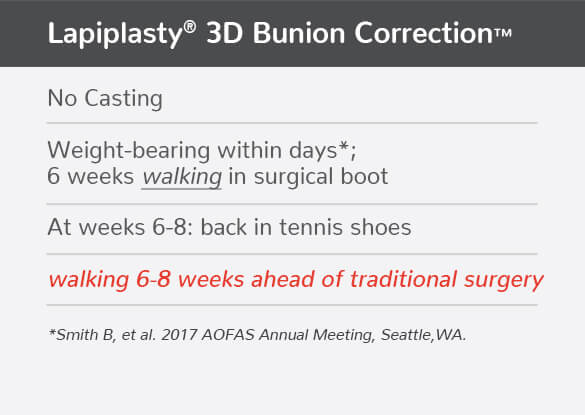

References
- Smith B, Santrock R, Dayton P, Hatch D. Immediate Weight Bearing after Biplanar Plantar Fixation of Lapidus: A Multi-Centered Study. 2017 AOFAS Annual Meeting, Seattle, WA.
- Kim Y, Kim JS, Young KW, et al. Foot Ankle Int. 2015. 36:944-52.
- Okuda R, Kinoshita M, Yasuda T, et al. JBJS. 2007. 89:2163-72.
- Jeuken RM, et al. Foot Ankle Int. 2016. 37:687-95.
- Dayton P, Ferguson J, Hatch D, Santrock R, Scanlan S, Smith B. 2016. Comparison of the Mechanical Characteristics of a Universal Small Biplane Plating Technique Without Compression Screw and Single Anatomic Plate With Compression Screw. J Foot Ankle Surg. 55:567-71.
- Dayton P, Ferguson J, Hatch D, Santrock R, Scanlan S, Smith B. Biplanar Plating with an Anatomic Tension-Side Plate for Lapidus Fusion: Improved Biomechanical Properties. Accepted for presentation at 2017 AOFAS Annual Meeting, Seattle, WA. Submitted for publication.
- Dayton P, Ferguson J, Hatch D, et al.. J Foot Ankle Surg. 2016. 55:567-71.
- Catanzariti, AR, et al. Jrnl Foot Ankle Surgery, 38:325-32.
